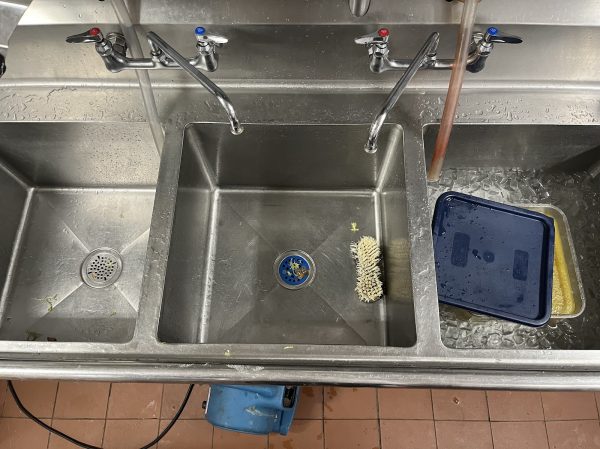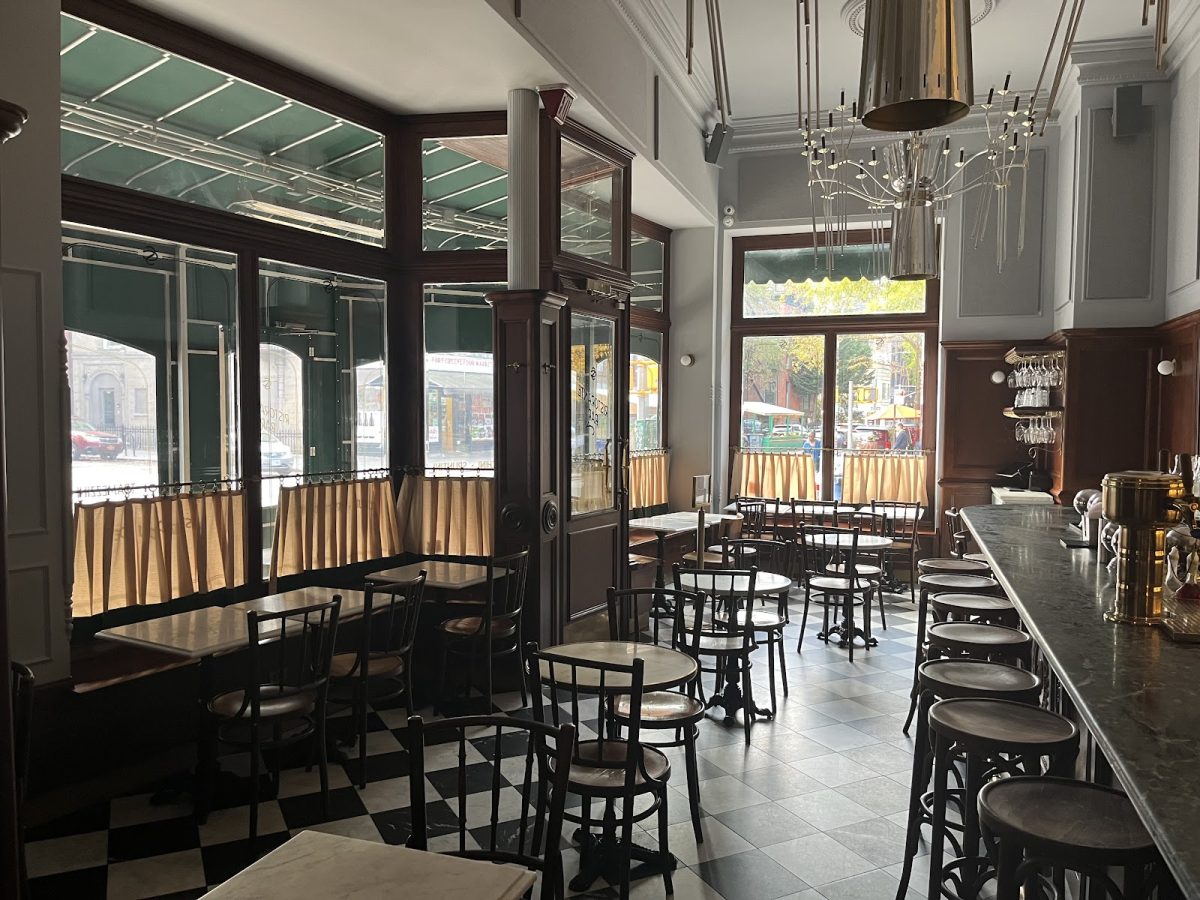About once a month, I walk through the rather unassuming doorway that marks many New York City restaurants and enter a warm, soothing luminescence marked by the glowing yellow lights. The smell of garlic butter, incense, and different perfumes, combined in a surprisingly pleasant manner, invite me into a cocoon of happiness, with no trace of the outside world.
Amidst the warm ambiance inside the restaurant, a delicate sophisticated dance unfolds behind the curtains.
In the grand fabric of urban life, restaurants have always held a unique place. They are spaces of connection, where friends and strangers gather, cultures collide, and conversations flow. Now, they are also evolving into spaces of transformation, where every plate serves as a reminder that our choices can impact the planet.
Just like many industries now, people are looking for change — change in employee treatment, change in bias tendency, and especially a change towards environmental awareness.
Lately, there have been concerns about the well-being of our planet and society. The concept of sustainability in the food industry has gained attention for years, sparking both excitement and doubt within the culinary world. Simply put, it advocates for food production that has no negative effect on the environment and economy. While some view it as an obligation, others see it as a burden. Nevertheless, one thing is clear — ensuring food sustainability is crucial for addressing our existing issues.
The food industry contributes to a third of the world’s greenhouse gas emissions. Agriculture, animals, and transportation, all part involved in the food industry, contribute significantly to this unreasonably high fraction. The restaurant world is trying to address this issue.
The restaurant industry is complex: tradition, art, and culture all shape the food world. Restaurants in New York City, especially, represent thousands of different cultures, with some creating fuel, others creating treats, and some creating art. Despite the complexity, however, restaurants can be an influential start to a sustainable future.
Sustainability is currently a relevant and widely discussed issue throughout the United States. This heightened awareness stems from the challenges of climate change and economic uncertainty, which are prompting individuals to seek sustainable alternatives for a multitude of industries, including the food business. Eduardo Mantelli, a prominent restaurant owner in Brooklyn, said, “I believe this is the direction the world is heading, and, sooner or later, the majority of traditional, every day restaurants will need to embrace this movement.” Although Mantelli referred to typical day-to-day restaurants, I would like to extend this idea further and assert that the entire food industry will ultimately need to adapt to these changes.
Interviews with employees at restaurants scattered throughout New York City have allowed me to dive deeply into the intricate world of culinary sustainability. I’ve encountered passionate chefs, like Chef Jonathan Loirola, the Italian-Brazilian head chef of Saraghina Cafe, who sources his ingredients from local farms and strives to limit food waste and carbon emissions while supporting his local communities. These culinary visionaries carefully curate their menus, methodically eliminating unnecessary waste and using seasonal ingredients, even if it means constantly adapting their recipes.
Chef Jon’s attempts to make Saraghina sustainable were not without challenges. He said there are many steps in making a restaurant sustainable, including, “choosing ingredients from a company or producer who is sustainable,” to “installing or creating a sustainability culture inside the restaurant.” Jon said, “the second step is the most challenging, to install a culture of sustainability in the restaurant. We have to deal with the personal and individual culture of each person who is working in the restaurant. And nowadays, we have people from all around the world.”
It’s not just in the kitchen where Jon and his fellow chefs’ dedication shines. Many of these restaurants have owners who understand the delicate balance between sustainability and profitability, embracing the challenge of maintaining a profit margin while staying true to their values. This often involves changing menus in order to incorporate sustainable practices, ensuring that the environment is always taken into consideration.
Trying to run an environmentally and economically sustainable restaurant is a challenge, especially in the hectic and expensive metropolis that is New York City, a city with one of the most competitive restaurant scenes in the world. The high cost of living directly correlates to the high cost of running a business, which puts pressure on sustainability-driven establishments. In a city like New York, finding consistent sources of local, sustainable ingredients is almost impossible, especially with an ever-changing menu.
Furthermore, educating both staff and customers about the importance of sustainability can be an uphill battle. Working in a restaurant for nearly six months, I observed that a significant portion of the workforce, particularly in the prep kitchen, consisted of immigrants who may not have been familiar with sustainability concepts. Educating employees is the greatest challenge, said Chef Jon, in enforcing sustainability into restaurant culture.
I have lived in the United States my entire life, and I am from a generation that is constantly lectured on sustainability, but I could not figure out the rules regarding sustainability in the restaurant where I worked.

I found myself wondering why clams had to be constantly supplied with running water. I quickly found out that clams need to be in clean water in order to flush out the debris that they previously consumed on the ocean floor. This initial struggle was just the tip of the iceberg, as I soon realized that it was equally important to maintain a delicate balance between the necessity of providing water for the clams and the imperative to avoid waste when doing so.
Just like the clams, many decisions in the kitchen involve culinary and environmental awareness in order to create the healthiest and most efficient meals. Lettuce, for example, should not be made wet but instead should be kept damp with towels and stored in a walk-in, in order to avoid bacteria and water waste.
To many, especially the upper middle class, sustainability is a battle of values. For them, supporting restaurants that prioritize sustainability is a way to align their dining experiences with their ecological beliefs. Yet, it is crucial to recognize that the sustainability challenge extends beyond this group. The upper middle class of New York is a small group, but sustainability must become universal. The lower class has limited access to sustainable dining with the most affordable food options in New York City, which often do not pursue sustainability in the slightest. The creation of a McDonald’s BigMac contributes CO2 emissions of between 1 – 3.5 kg, which is around three times as much as a human produces in a day. Fast food restaurants are industrial factories providing a quick fix to many and raking in profit with no regard for human health, let alone the environment.
Despite the corporate supremacy that is fast food, New York City’s independent restaurants can usher in change.
Restaurants are not only about food but also about embracing culture and fostering innovation. With a New York City restaurant scene that represents a melting pot of flavors, there exists a chance for a domino effect — a joint effort toward creating a more environmentally conscious city. As more and more restaurants adopt environmentally conscious practices, others will be faced with the same decision. Regardless of the choice they make, an emphasis on sustainability will revolutionize the dining landscape.
While the path is full of challenges, progress is still being made. Government motivation and policies are emerging to support sustainability in the food industry. These include tax incentives for restaurants, as well as eco-friendly initiatives centered around composting and recycling.
Promoting responsibility through the use of government resources is a measure towards achieving sustainability. However, it is the commitment and efforts of individuals, chefs, and restaurant owners that have an impact on driving change.
In the kitchens of New York City’s restaurants, a quiet revolution is taking place. Chefs, such as Jon Loirola and others, are demonstrating that culinary ingenuity and sustainability can work hand in hand to foster innovation. These chefs’ dedication to crafting exquisite dishes and managing their businesses sustainably is a testament to the transformative power of the restaurant industry.
Sustainability in the food industry is a dynamic dance that requires collective participation. One’s choices when dining out can influence the direction the industry takes. By supporting restaurants that prioritize sustainability, we become essential partners on the journey toward a more environmentally conscious future. However, it’s important to fully grasp the challenges that restaurants face in achieving sustainability.
As you step out of that unassuming doorway, back into the bustling streets of New York City, consider the restaurant that you just left. It’s not merely a place to eat; it’s a place where values are on the menu, where a commitment to sustainability is an ingredient in every dish, and where the struggling balance between sustainability and economic growth fights for dominance.
Sustainability in the food industry is a dynamic dance that requires collective participation. One’s choices when dining out can influence the direction the industry takes. By supporting restaurants that prioritize sustainability, we become essential partners on the journey toward a more environmentally conscious future. However, it’s important to fully grasp the challenges that restaurants face in achieving sustainability.

